When it comes to hair, many of us yearn for the freedom to experiment with different styles, colors, and lengths. However, not everyone has the hair they’ve always dreamed of. That’s where wigs come to the rescue! Wigs offer a transformative solution, allowing individuals to effortlessly achieve their desired look. Whether for medical reasons, fashion purposes, or simply a desire for change, wigs open up a world of possibilities.
But with so many types of wigs available, how do you find the perfect fit? Whether you’re a hairstylist or a customer, understanding the various types of wigs is crucial. Let’s explore the different types of wigs to help you find the perfect match.

Types of Hair: Synthetic or Human
Choosing a wig starts with a fundamental decision: human hair or synthetic hair.
Human Hair
Human hair wigs are made from real hair sourced from donors. These wigs look and feel like natural hair, providing the most authentic appearance. Human hair wigs offer extensive styling options—they can be heat-styled, colored, and treated just like your own hair.
The creation process involves collecting high-quality human hair, sorting it, and constructing the wig cap. Skilled wig makers hand-tie individual hair strands onto the cap, ensuring a natural hairline and realistic look.
Virgin Hair
Virgin hair is hair that has never been chemically processed or colored. It’s hair in its purest form—free of perms, bleaches, dyes, and treatments. Once hair has been colored or treated, it can’t return to its virgin state. Virgin hair is prized for its strength and ease of coloring, making it a favorite for high-end hair extensions.
Synthetic Hair
Synthetic hair is made from artificial fibers like acrylic or nylon. These fibers undergo treatments to mimic the appearance and texture of natural hair. The quality of synthetic hair varies, and higher-quality fibers can closely resemble human hair. However, synthetic wigs are generally less durable, lasting about 4-6 months with proper care.

Understanding these differences is key to finding the right wig for your needs. Whether you choose human or synthetic hair, there’s a perfect wig out there waiting for you.
Things to Consider When You Buy Wigs
When buying wigs, several factors ensure you find the perfect fit and style.
Length
The length of the wig significantly affects your overall look. Consider your personal style, comfort, and lifestyle. Longer wigs offer versatility in styling, while shorter wigs are easier to maintain and provide a casual look.
Texture
Wig textures range from straight to wavy, curly, or kinky. Choose a texture that complements your natural hair and the look you want to achieve. The right texture should enhance your facial features and align with your personal style.
Face shape
Your face shape influences which wig styles look best. For instance, a round face benefits from wigs with layers and volume on top to create length. A square face looks softer with wigs featuring curls or waves.
Color
The color of your wig is crucial for a natural and flattering appearance. Consider your skin tone, eye color, and preferences. You can match your natural hair or try new shades. Highlights, lowlights, or ombre effects add dimension.
Cap size
A proper fit is essential for comfort and a natural look. Measure your head circumference to determine the right cap size. Most wigs have adjustable straps or clasps for a secure fit. Choosing the correct cap size prevents discomfort and slippage.
Seek professional help when purchasing a wig. Wig specialists or hairstylists can offer personalized guidance, recommend styles based on your preferences, and assist with fitting and maintenance.
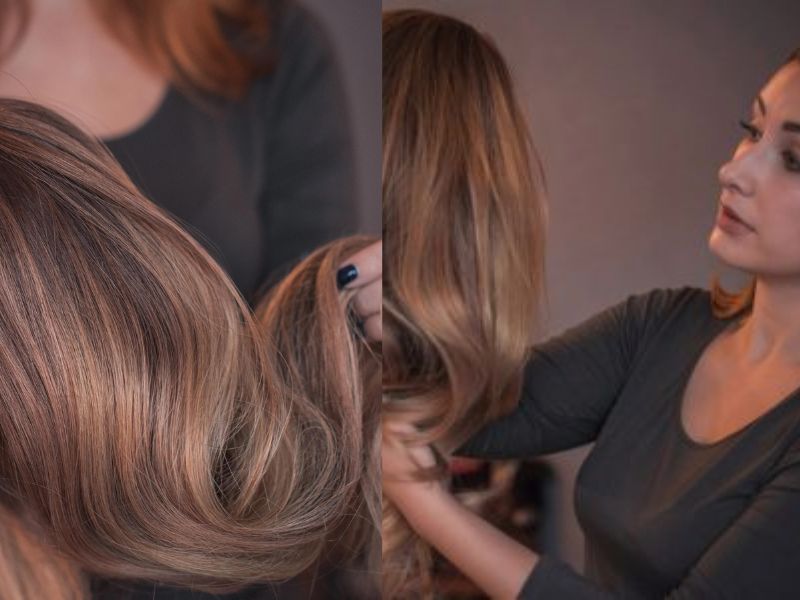
Types of Wigs
Lace Wigs
Lace wigs have a lace cap base, resembling the scalp when worn. Hair strands are hand-tied to the lace cap, creating a natural hair growth illusion. Lace wigs are popular for their versatility and natural look. There are two main types: full lace wigs and lace front wigs.
Full Lace Wigs
Full lace wigs have a lace base covering the entire head, allowing for various styling options. You can part the hair anywhere on the wig. They provide a natural-looking hairline, seamlessly blending with the wearer’s skin.

Lace Front Wigs
Lace front wigs have a lace cap at the front, from temple to temple. The rest of the cap is made of durable material for stability. They create a natural-looking hairline at the front, allowing styling away from the face. The back is usually machine-wefted for coverage.
The delicate and transparent lace material gives a realistic and undetectable hairline, allowing for off-the-face styling and different parting styles.
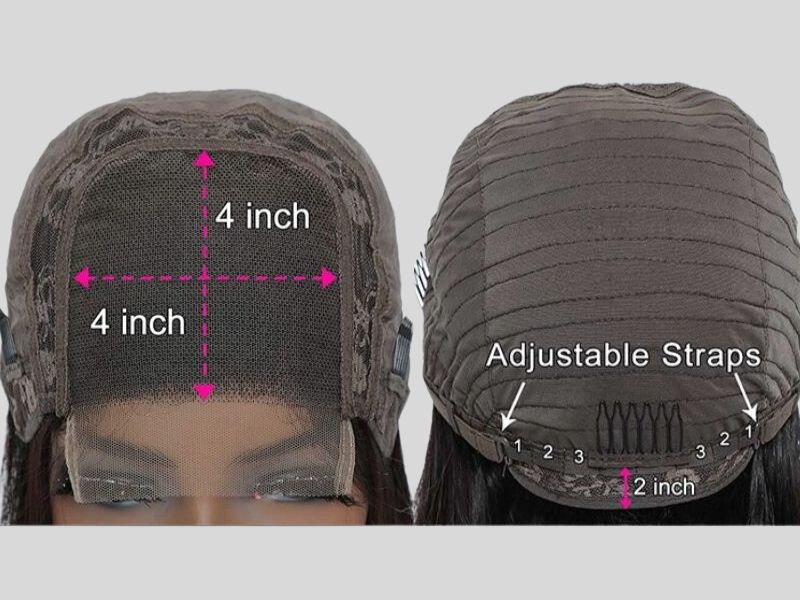

Pros
- Natural Appearance: Lace wigs mimic the scalp, offering a natural and undetectable look.
- Versatility in Hairstyling: They allow for various hairstyles, including updos, ponytails, and different partings.
- Hair Protection: Lace wigs protect natural hair from heat, styling damage, and environmental elements.
- Longevity: With proper care, lace wigs last longer and can be reused, making them cost-effective.
Cons
- Price: High-quality lace wigs can be expensive, ranging from $300 to $1000.
- Application and Maintenance: Applying and maintaining a lace wig requires time, patience, and skill. Regular washing, conditioning, and styling are necessary.
- Breathability: The lace base can restrict airflow, causing discomfort or sweating, especially in hot conditions. Proper care is needed to maintain scalp hygiene.
Mono Wigs
A mono wig, or monofilament wig, features a cap made from a single, sheer material resembling the scalp, providing a natural-looking base.
The cap is typically crafted from fine mesh nylon or polyester, with individual hairs hand-tied onto it. This technique creates the illusion of hair growing directly from the scalp, giving a realistic appearance.
The key feature of a mono wig is the monofilament top. This part of the wig cap, where the hair is parted, uses monofilament material. The sheer fabric has tiny holes, allowing the wearer’s scalp to show through and mimic natural hair growth and scalp color.

Pros
- Lightweight: The monofilament material is lightweight and breathable, ideal for those who get hot while wearing wigs.
- Excellent for Sensitive Skin: The material is gentle and doesn’t require adhesive, perfect for sensitive skin.
- Easy to Apply: Mono wigs are easy to put on and take off, making them suitable for those who don’t want to wear a wig for extended periods.
Cons
- Temporary: Without adhesive, the wig must be reapplied daily and isn’t suitable for long-term wear.
- Generally Capless: Capless wigs require careful handling when combing and styling to avoid damage.
- Price: Starting around $200, mono wigs might not be the best option for beginners looking for a budget-friendly choice.
100% Hand-Tied Wigs
A 100% hand-tied wig is crafted with each hair strand individually hand-tied to the wig cap. This method, unlike weft or machine-sewn hair, offers the highest level of craftsmanship and detail.
Skilled wig makers meticulously knot each hair strand onto the cap, creating a natural look that closely resembles hair growth from the scalp.

Pros
- Natural and Realistic Appearance: Hand-tied wigs mimic natural hair growth, resulting in a realistic look. The hair moves freely, giving the illusion of hair growing directly from the scalp.
- Lightweight and Comfortable: These wigs are lighter and more breathable, making them ideal for extended wear.
- Durability and Longevity: Hand-tied wigs are durable and less prone to shedding. With proper care, they can last 1-3 years.
Cons
- Higher Price Point: The labor-intensive process and skilled craftsmanship make hand-tied wigs more expensive.
- Time-Consuming Production: Hand-tied wigs take longer to produce due to the manual process, resulting in longer wait times.
- Limited Availability: Due to the intricate craftsmanship, hand-tied wigs may be harder to find in specific styles, colors, and lengths.
Capless Wigs
A capless wig, also known as an open-cap or wefted wig, features a cap with open wefting instead of a solid base. This design makes the wig lightweight, breathable, and comfortable.
In a capless wig, hair is sewn onto wefts, which are rows of hair sewn together using a sewing machine. These wefts are attached to the open cap, leaving gaps that allow for increased airflow and ventilation, reducing heat and moisture buildup on the scalp.

Pros
- Lightweight and Breathable: Capless wigs have open wefts, allowing for increased airflow. This makes them comfortable to wear, especially in warm weather or for individuals who perspire more.
- Cost-Effective: Capless wigs are generally more affordable due to the absence of a solid cap, making them a budget-friendly option.
- Quick Drying Time: The open weft construction allows air to circulate, resulting in faster drying times after washing, which is convenient for frequent washers or those in humid climates.
Cons
- Limited Styling Options: The open wefts may limit the ability to achieve certain hairstyles.
- Less Durability: Capless wigs are more prone to shedding and may have a shorter lifespan. The lack of a solid cap can lead to hair strands becoming loose or tangled over time.
- Scalp Visibility: The open wefts may allow the scalp to be visible, which can be a concern for individuals with little to no hair, compromising the natural look.
- Limited Longevity: Due to reduced durability and potential for shedding, capless wigs may need more frequent replacement or repairs to maintain their appearance and functionality.
Frequently Asked Questions About Wig Types
What types of wigs are best for beginners?
Capless wigs are ideal for beginners. They are very easy to use—just put them on without needing to cut lace or style. They are lightweight and breathable, making them comfortable for those new to wearing wigs. Capless wigs are also easy to maintain and reasonably priced, starting at $150.
What type of wig is most comfortable?
Hand-tied wigs offer the utmost comfort and create a realistic look of hair growing naturally from the scalp. They involve meticulously hand-tying individual hair strands into a soft, stretchy net, ensuring a gentle and secure fit. Typically made with real hair, hand-tied wigs reflect superior quality.
What types of wigs are “medical”?
“Medical wigs” are designed for medical hair loss. Hand-tied wigs are the best choice for this situation. They are made with a soft, stretchy mesh material that feels especially comfortable on a bald scalp, making them suitable for cancer patients and others with medical hair loss. However, if your budget doesn’t allow for a hand-tied wig, other types can still be a good alternative.
What type of wig is best for a sensitive scalp?
Hand-tied wig caps are excellent for sensitive scalps. Each hair strand is meticulously hand-knotted and secured to the cap material, providing flexibility for various hairstyles. These wigs are considered the most comfortable option available.
What is the best type of hair?
There are three primary categories of hair for wigs: human hair, virgin hair, and synthetic hair.
- Virgin Hair: The best type, as it hasn’t been chemically processed. It’s easy to bleach, dye, and blend with natural hair, though it’s also the most expensive.
- Human Hair: Offers a natural appearance and long lifespan but is more expensive than synthetic options.
- Synthetic Hair: More affordable but can feel coarse and dry. Not suitable for heat styling and may have a less realistic appearance, though advancements have improved their quality.
What type of wig is best for thinning hair?
For thinning hair, a lace front or mono wig is an excellent choice. These wigs have a fine mesh material at the crown, mimicking the appearance of a natural scalp. They provide a realistic look and allow for natural-looking parting and styling options.
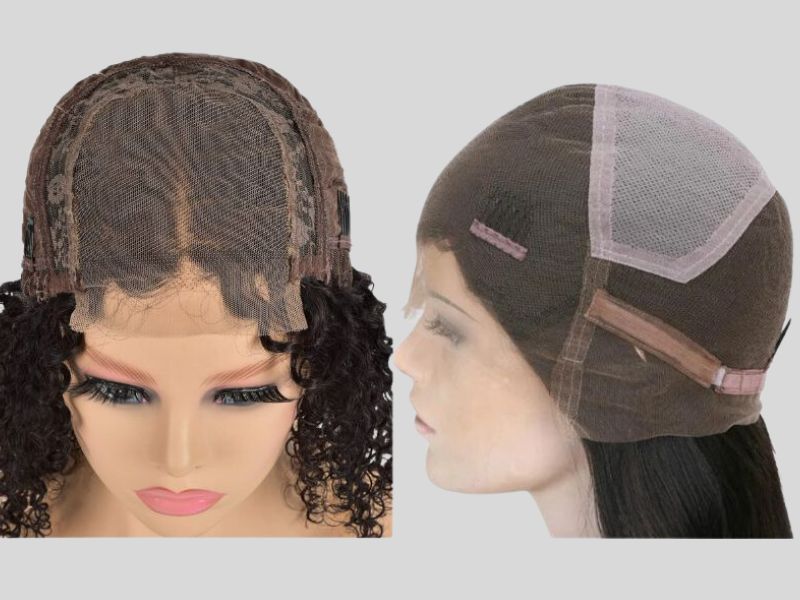
What Are the Different Types of Wigs & Hair Pieces?
When it comes to wigs and hairpieces, there are various options to cater to different needs and preferences. Here are some types available:
Hats with Hair
Hats with hair combine a hat or cap with attached hair. These are ideal for those wanting a quick and easy solution to add volume or cover hair loss. The hair is integrated into the hat, providing a natural and seamless look.
Bangs
Bangs, or fringe, are hairpieces designed to add bangs to your existing hairstyle. They come in various styles, lengths, and colors, allowing you to experiment without committing to cutting your hair. Bangs can transform your appearance and frame your face.
Extensions & Volumizers
Hair extensions and volumizers add length, volume, and thickness to your natural hair. Extensions come in clip-in, tape-in, or sew-in options and are attached to your own hair. Volumizers add fullness and body to specific areas, such as the crown or sides.
Hair Wraps, Buns & Ponytails
These versatile hairpieces allow you to create elegant updo hairstyles easily. Hair wraps add texture and style to a ponytail or bun. Pre-formed buns can be easily attached to create a neat look. Ponytails are extensions designed to add length and volume to your natural ponytail.
Headbands
Headbands with attached hair add volume and length effortlessly. These headbands feature hair attached to the band, allowing you to wear them like regular headbands while enjoying an instant hair transformation.
Each type of wig and hairpiece offers unique features and benefits. They can be made from synthetic or human hair, providing different options in terms of style, texture, and durability. Consider your personal preferences, lifestyle, and the occasion when choosing the right type.
Understanding the different types of wigs helps in finding the perfect fit. From types of hair to elements you need to consider, this guide covers it all.
Leveraging your expertise and knowledge, you can deliver a transformative experience that boosts self-assurance and enhances appearance. Contact us—the top human hair factory in Vietnam—for assistance. Our team of experts is ready to help you find the perfect wig, ensuring satisfaction and loyalty!



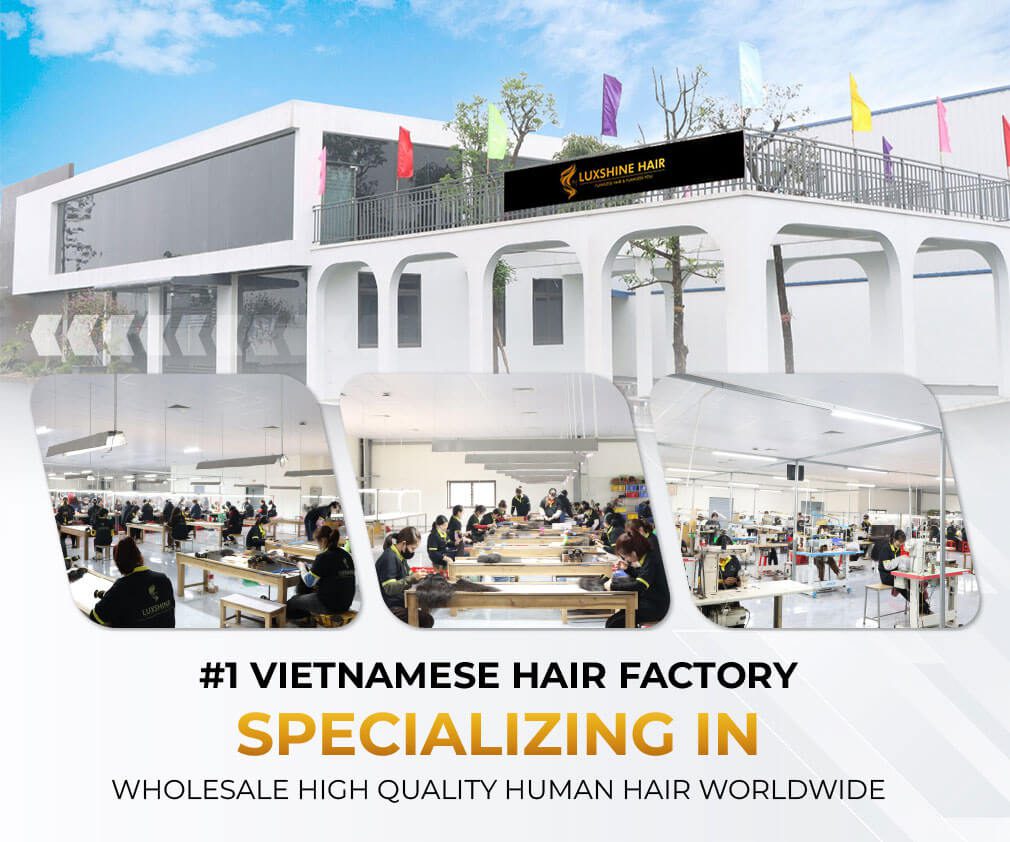

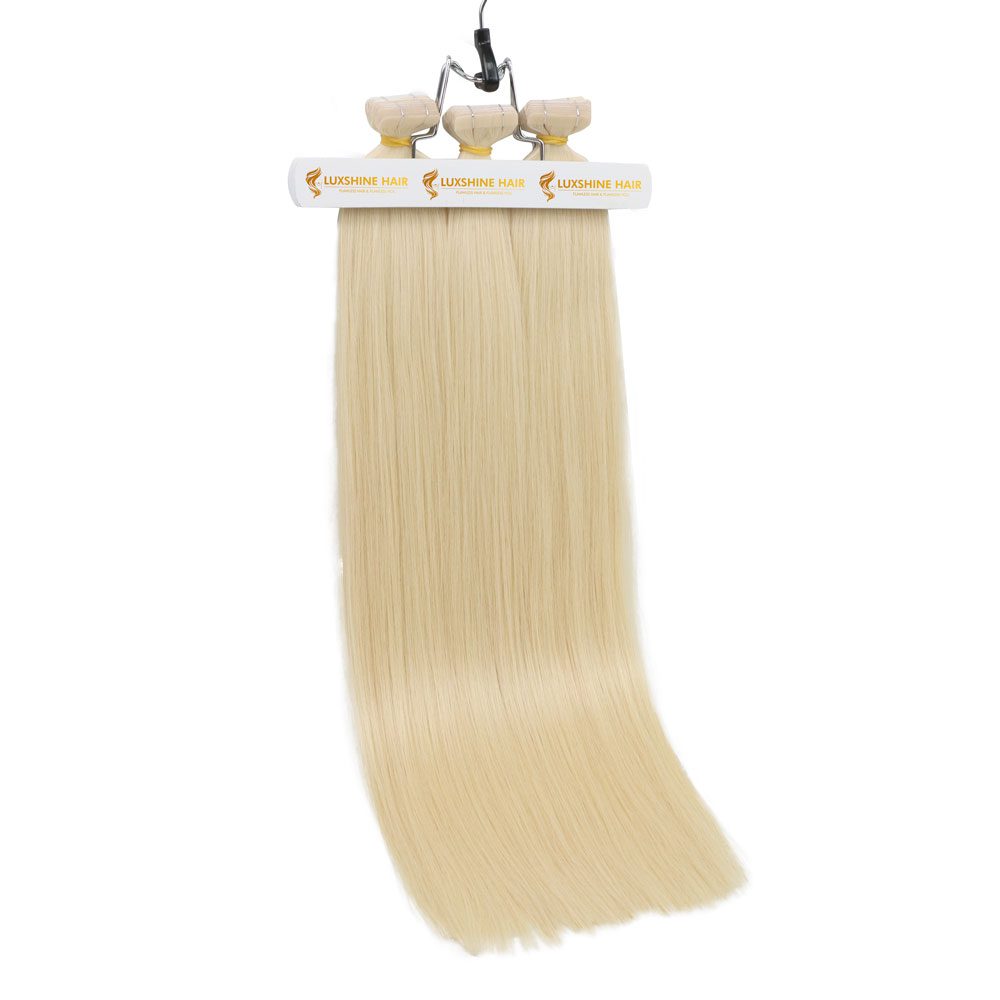
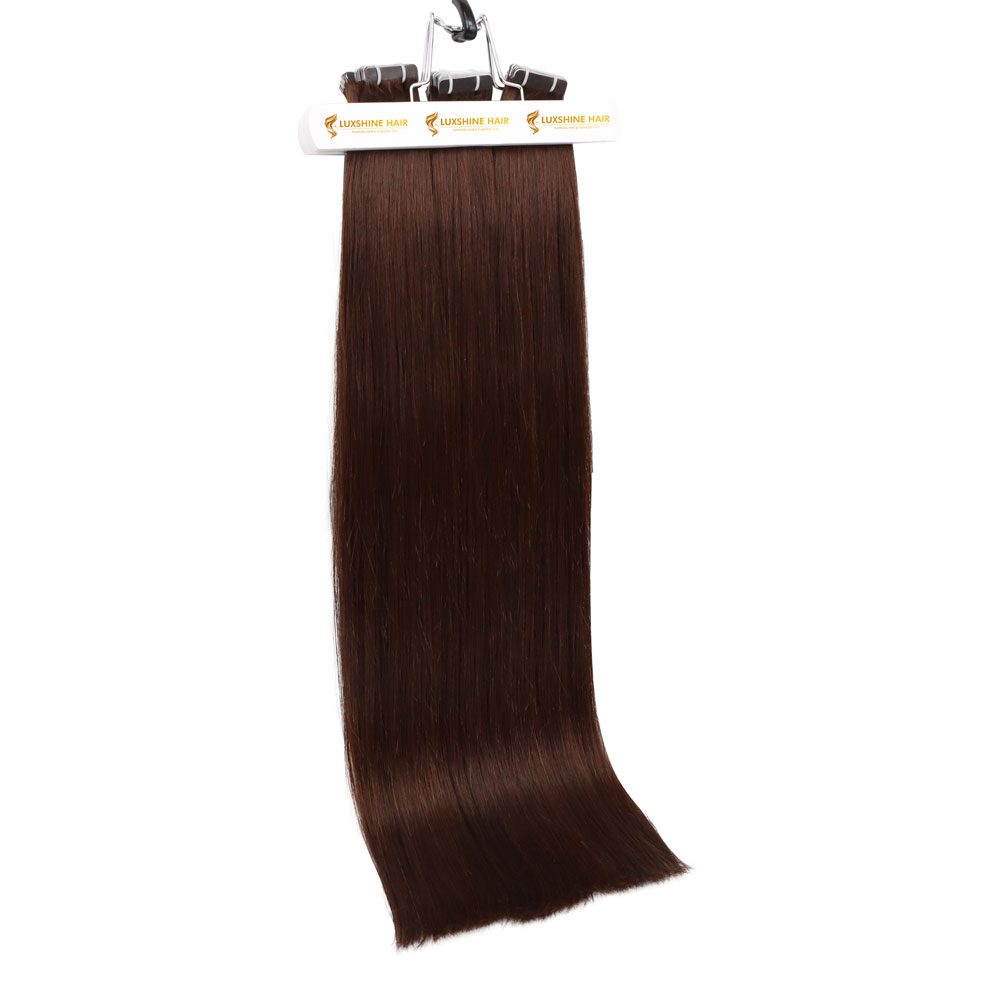
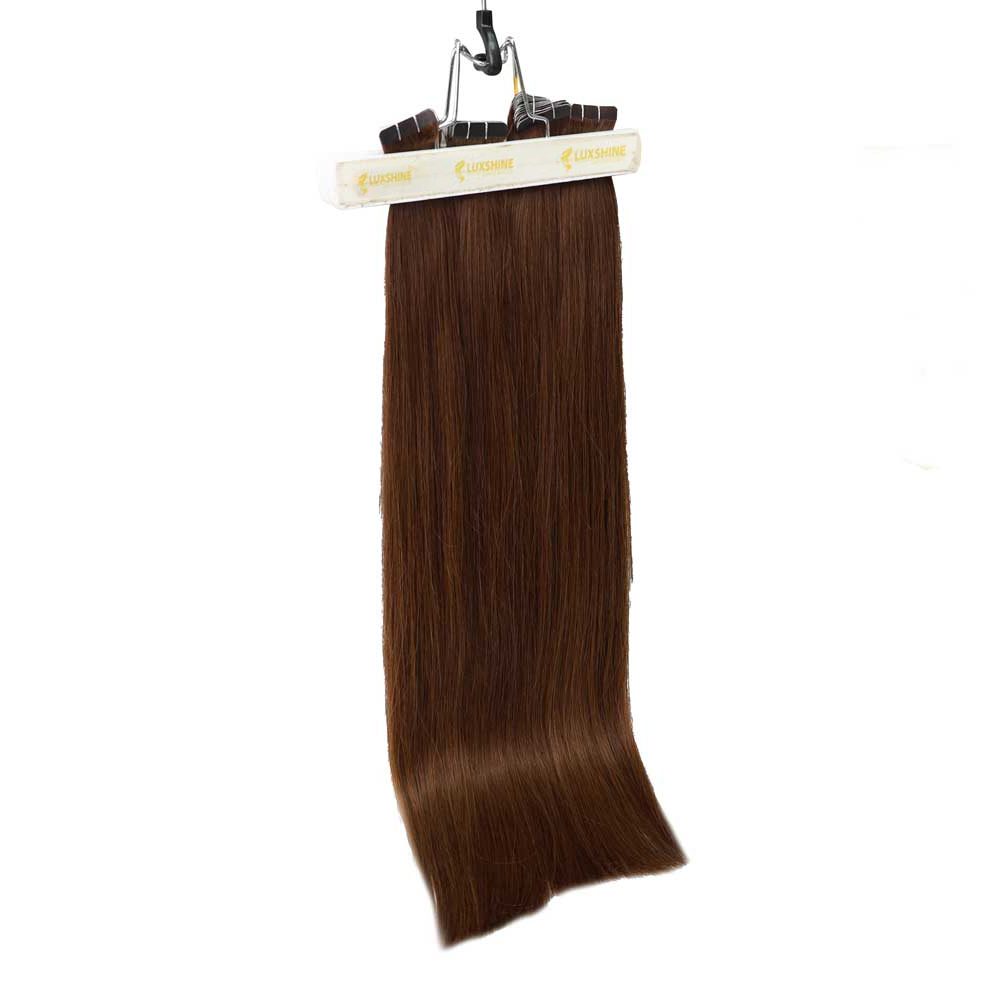
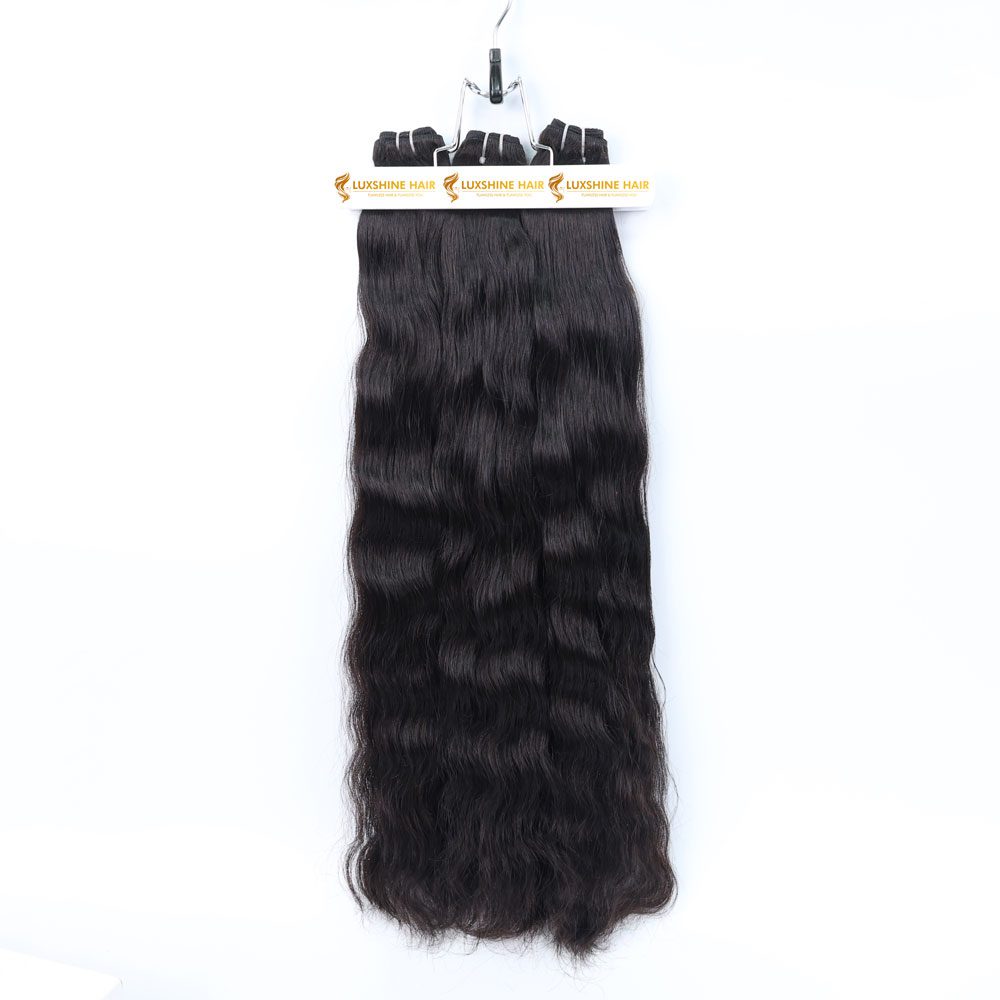

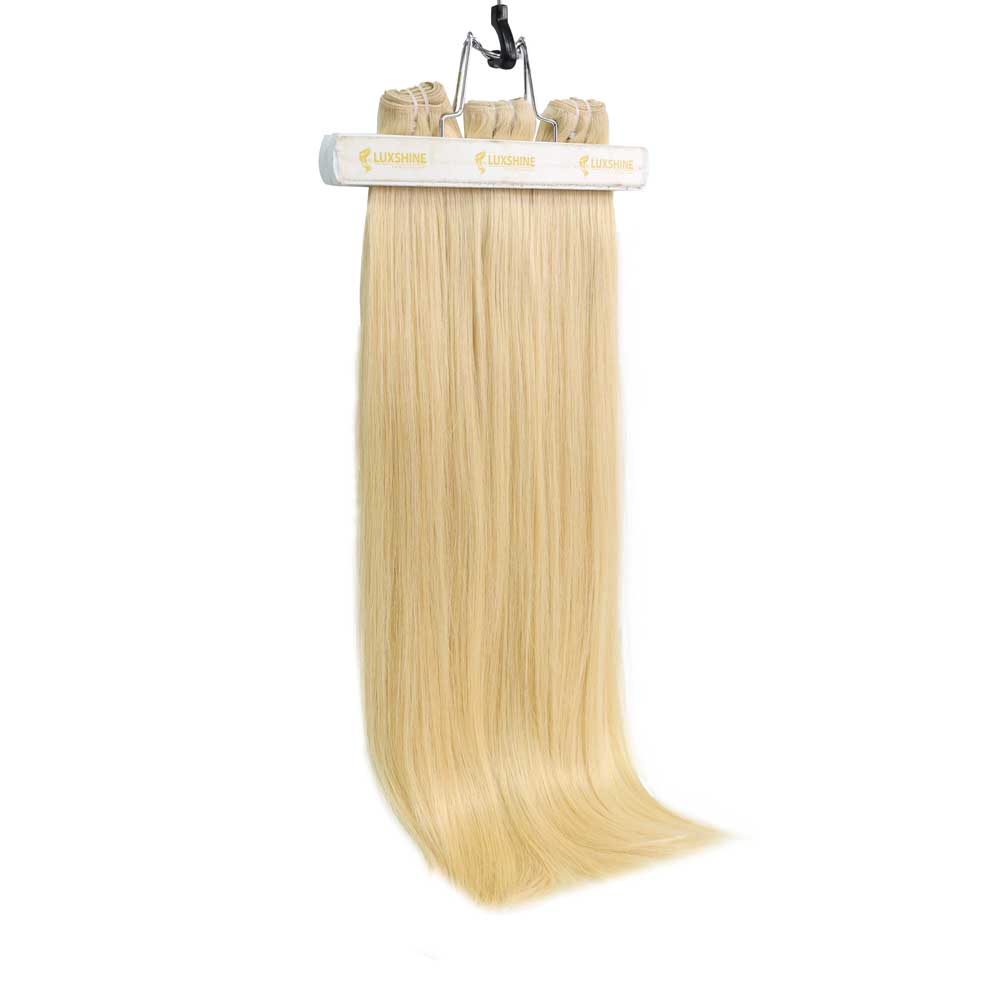
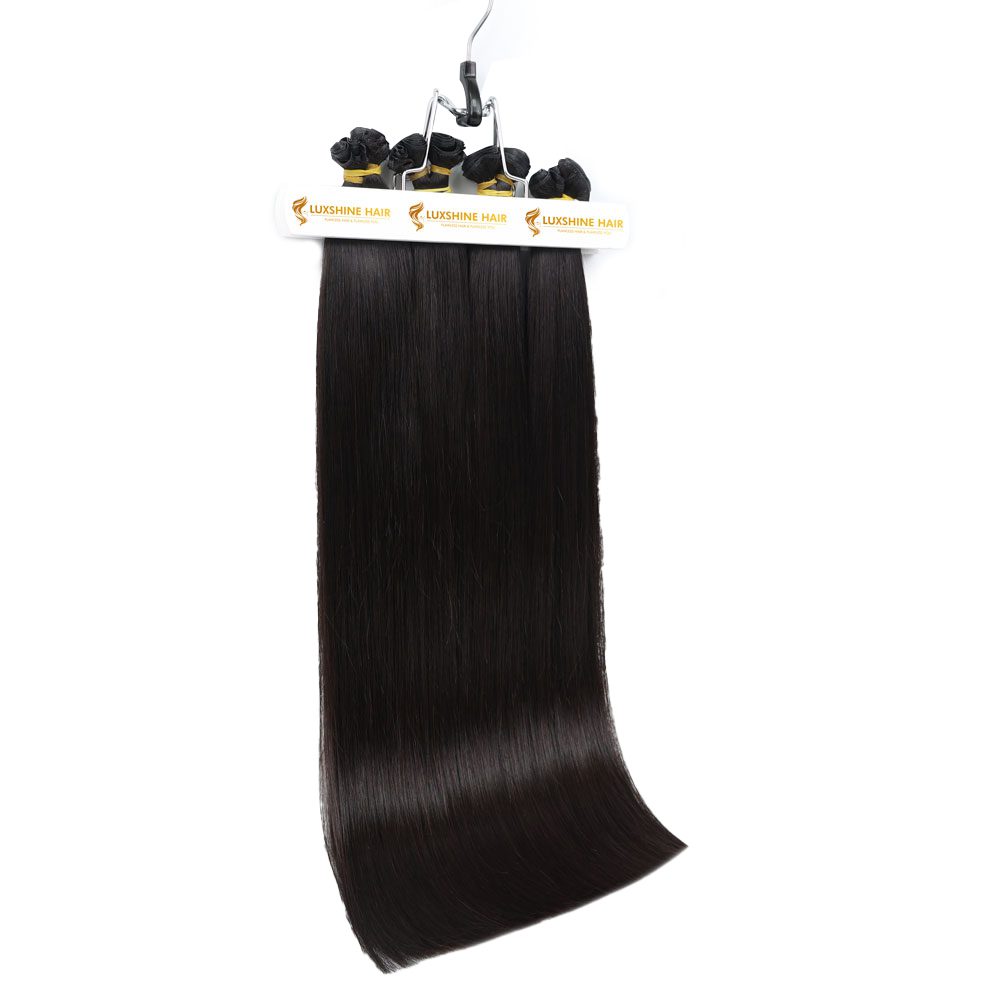

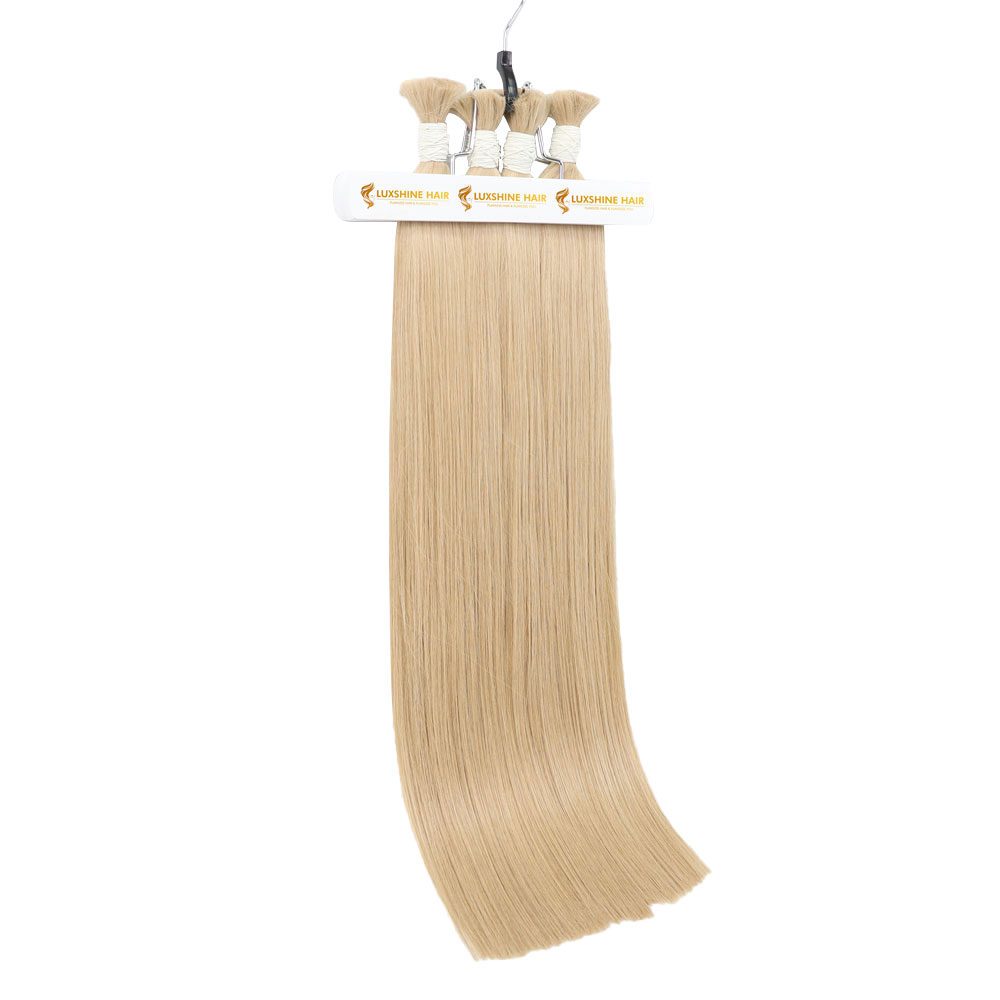

2 thoughts on “Types Of Wigs: Finding Your Client’s Perfect Fit”
I’m looking forward to start a wigs business on a small scale yet I know nothing about them but trust me the information I’ve got from this site it has polished my brain and I feel confident of what I want to start thank so much miss Emily
Thank you for your trust! It is our pleasure to assist you to start your business. Please please get in touch with us via WhatsApp number or fill out the contact information form. Our dedicated customer service team will swiftly reach out to assist you further. Wishing you a fantastic day ahead!